

3D Printer for Signage in South Africa
SoliFuse has developed a dedicated solution for 3D printing as a true alternative to traditional signage methods. The SoliFuse Speed Series 3D printers are industrial-grade machines purpose-built for making channel letters, combining large build volumes, dual-extrusion technology, and fast print speeds to meet the needs of signage fabrication.
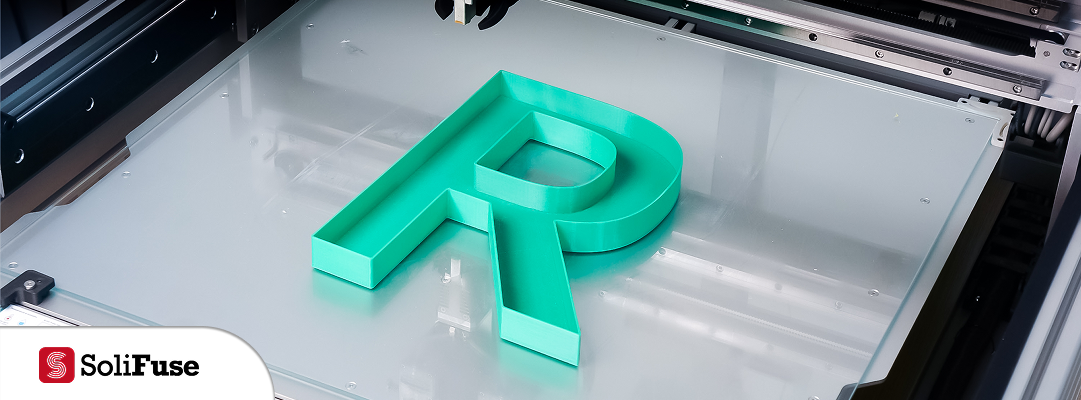
Precision Mechanics and Automation Features
Available Models
SoliFuse 3D printer, featuring a spacious flat build area and dual-spool feed for two filaments. All Speed Series models share a similar open-gantry design optimized for printing wide variety of designs.
Three model sizes are available to accommodate different dimensions and production volumes:

Speed X1
600 × 600 × 120 mm build volume (23.6″ × 23.6″ × 4.7″).
Ideal for most standard channel letters and indoor signs.
R59 000 Inc Vat
R10 000 down payment & R2681 over 24 months

Speed X2
900 × 900 × 120 mm build volume (35.4″ × 35.4″ × 4.7″).
Suited for larger lettering and multiple letters printed together.
R72 600 Inc Vat
R10 000 down payment & R3390 over 24 months
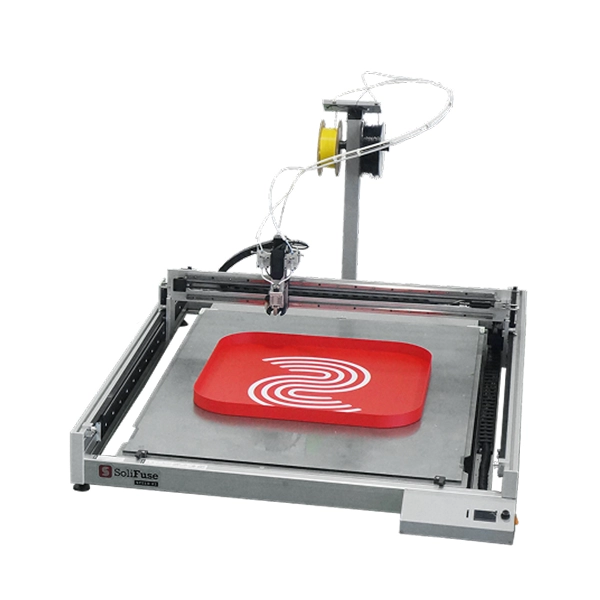
Speed X3
1350 × 900 × 120 mm build volume (53.2″ × 35.4″ × 4.7″).
Extra-large format for big signage jobs or high-throughput printing.
R85 900 Inc Vat
R10 000 down payment & R4111 over 24 months
All three models come equipped with dual-extrusion print heads and share the same advanced capabilities. The printers use FFF (Fused Filament Fabrication) technology with a unique “two filaments in, one nozzle out” feeding system. This means you can load two spools of filament (for example, two different colors or types of material) and the printer will feed them through a single nozzle as needed. The SoliFuse Speed Series is engineered to be the fastest channel letter 3D printer on the market, with an extrusion rate up to 31 mm³ per second – roughly 160 mm/s print speed, which is about twice as fast as competing products for this application. High-speed printing is crucial for sign companies, as it enables quick turnaround on large letters and bulk jobs.
Advanced Extrusion System
High-Speed Performance
Print speeds up to 160 mm/s – twice as fast as competing products, with extrusion rates up to 31 mm³ per second
Automation Features
36-point auto bed leveling, filament run-out detection, and automatic filament switching.
Dual-Color Printing
Seamless two-color or dual-material prints with automatic filament switching and clean color separation
Minimal Post-Processing
Smooth, accurate walls ready to use with no welding, grinding, or painting required
DualDrive Technology
High-torque dual gear filament drive motors delivering 2.5× the extrusion throughput
Precision Mechanics
Dual linear guide rail system and high-torque stepper motors for stable, accurate printing
The Specifications
GENERAL | |||
Speed X1 | Speed X2 | Speed X3 | |
Build Volume | 600 × 600 × 120 mm | 900 × 900 × 120 mm | 1350 × 900 × 120 mm |
Technology | FFF (Fused Filament Fabrication) | ||
Feeding Method | Two filaments in, one nozzle out | ||
Print Head | HES Technology (High extruding speed print head) | ||
Nozzle Temperature | 260°C / 500°F | ||
Build Platform Temperature | 80°C / 176°F | ||
Layer Height | 0.2, 0.3 mm | ||
Leveling Method | Auto calibration | ||
Build Platform | Removable glass platform | ||
HARDWARE | |||
Data Transmission | SD card | ||
Motion Controller | STM32 | ||
Motion System | 57mm step motors motion system | ||
Screen | 12864 mono LCD screen | ||
Filament Sensor | Yes (Automatically pause printing when the filament run out) | ||
POWER SUPPLY | |||
Power Supply Inuput | 110~130/200~230V AC, | 200~230V AC, | 200~230V AC, |
Power | 1200W | 1800W | 2400W |
FILAMENT | |||
Filament Diameter | 1.75mm | ||
Filament Type | PLA, PETG filament | ||
Third-party Filament | Available | ||
SOFTWARE | |||
Software | FormLetter | ||
Input Format | SVG | ||
Output Format | GCODE, DXF | ||
Operating System | Win 10 | ||
PACKAGING | |||
What’s in the box | 1. Speed X1 3D Printer ×1 | ||
Printer Size | 1080×950×850 mm | 900 × 900 × 120 mm | 1350 × 900 × 120 mm |
Printer Weight | 102kg / 225lbs | 132kg / 291lbs | 153kg / 337lbs |
Package Size | 1140×1100×690 mm | 1440×1400×690 mm | 1890×1400×690mm |
Package Weight | 125kg / 275 lbs | 166kg / 366 lbs | 195kg / 430 lbs |
Industrial 3D Printer for Signage Shops & Professional 3D Channeling Fabricators
Experience the future of channel letter manufacturing with SoliFuse Speed Series
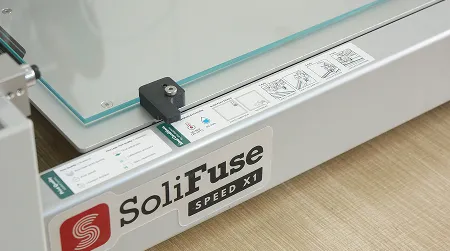
Auto Bed Leveling
Each machine performs a 36-point automatic bed leveling routine, calibrating the build platform for a perfectly even first layer. This auto-calibration ensures that even large prints adhere well and start off correctly, without the user manually shimming or adjusting the bed. Easy startup means less downtime and fewer failed prints due to leveling issues.
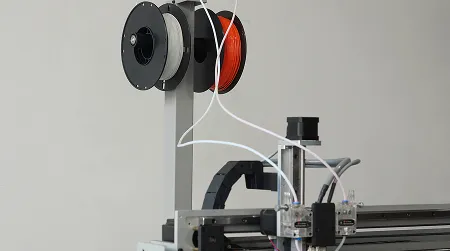
Filament Run-Out Detection
The SoliFuse printers are equipped with filament sensors that pause the print if a spool runs empty or if the filament breaks. This is critical for lengthy print jobs – you won’t waste a nearly-complete letter due to running out of material. The machine will wait for you to load a new spool and resume where it left off, a great safeguard during unattended overnight prints.
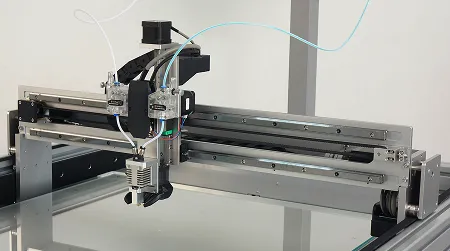
Auto Filament Switching
In two-color print mode, the printer can be programmed (via the software) to automatically switch filaments at the desired layers or segments. You don’t have to babysit the machine to initiate color changes – it’s handled seamlessly in the G-code. This makes multi-color channel letters as easy as a single-color print job, with no manual intervention needed.
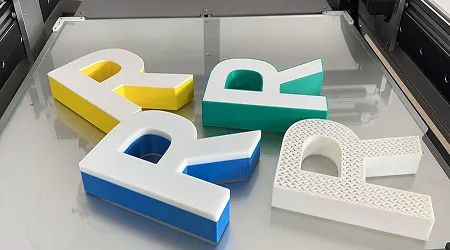
Minimal Post-Processing
Parts come off the Speed Series printer essentially ready to use. The prints have smooth, accurate walls that typically do not require machining or extensive finishing. Any support structures (if used) are plastic and can be easily removed. There is no welding, grinding, or painting of channel letter returns required after printing – they’re already the correct shape and color. Often the only post-process is assembling the 3D printed return with its face or back panel.
FormLetter
Simplifying Sign Design & Production
Design a 3D printing letter is as easy as building blocks. No 3D modeling skills needed.
Here is a general introduction about how to use our FormLetter software.
Designing Channel Letters in FormLetter (Step-by-Step)
1. Import or Create Letter Design
Begin with your artwork or text. You can either type text directly in FormLetter, choosing from over 30 built-in fonts , or import a vector file (SVG format) of a logo or custom design . FormLetter supports standard vector formats from tools like Adobe Illustrator, CorelDRAW, or Inkscape, so it’s easy to bring in client logos or special typography.
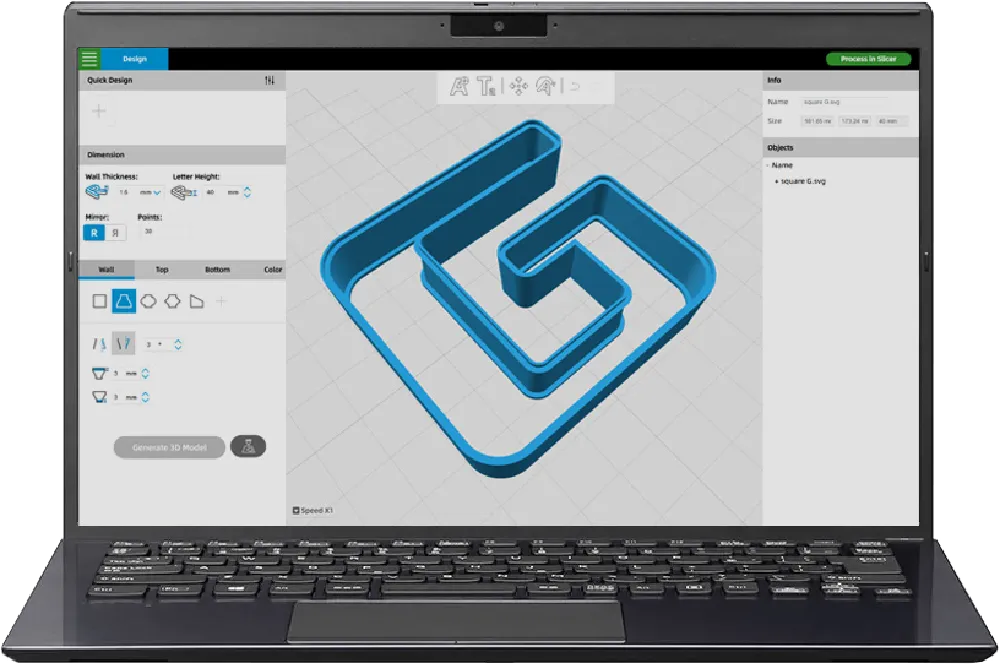
2. Choose the Letter Wall Style
Select a style for the 3D “wall” (return) of the channel letter. FormLetter provides five built-in wall profile styles (e.g. straight, slanted, rounded, etc.) with about 15 adjustable parameters to fine-tune dimensions . You can set the letter depth (up to ~120 mm to match printer capability) and even import a custom SVG profile if you want a unique wall shape – giving you endless possibilities for the side wall appearance.
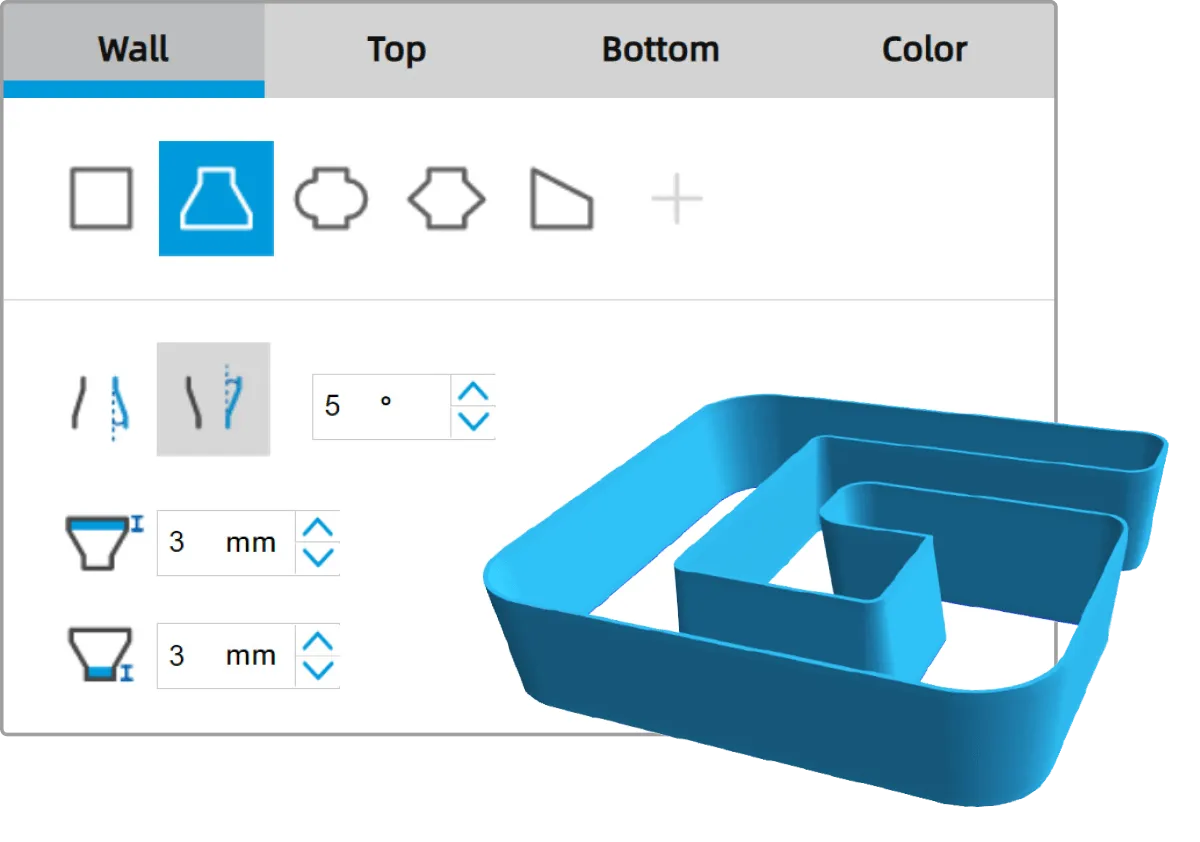
3. Set the Top Edge and Rib
Configure how the top edge of the printed channel will be formed. You have options to add a rib (lip) at the top of the printed return . This rib is a thin ledge that will hold a face panel (acrylic or other material) in place. You can choose whether to generate this rib and adjust its size as needed. If you plan to pour liquid acrylic for the face (a method for thin letters), FormLetter can also mirror the letters and generate support ribs accordingly – making it easy to create molds for resin pouring. (For instance, small/thin letters can be printed face-down with a rim to contain liquid acrylic, which is an efficient method for complex designs .)
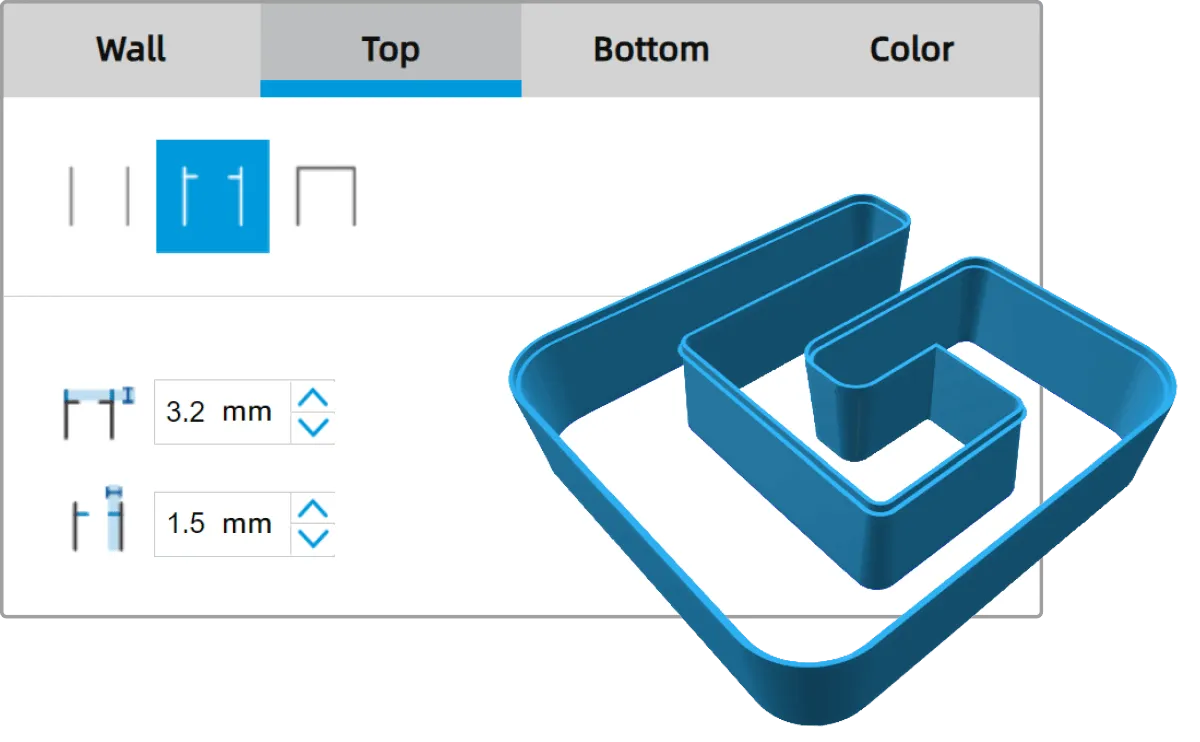
4. Set the Bottom Edge Style
Define the shape of the bottom edge or base of the channel letter. FormLetter includes five bottom edge styles (such as flat, beveled, folded edges, etc.) with nine adjustable parameters . The bottom edge design can affect how the letter mounts to a back panel or wall. For example, a beveled fold bottom edge can create a flange for mounting or a decorative chamfer . You have flexibility to get the desired structural and visual effect for the bottom of the letter.
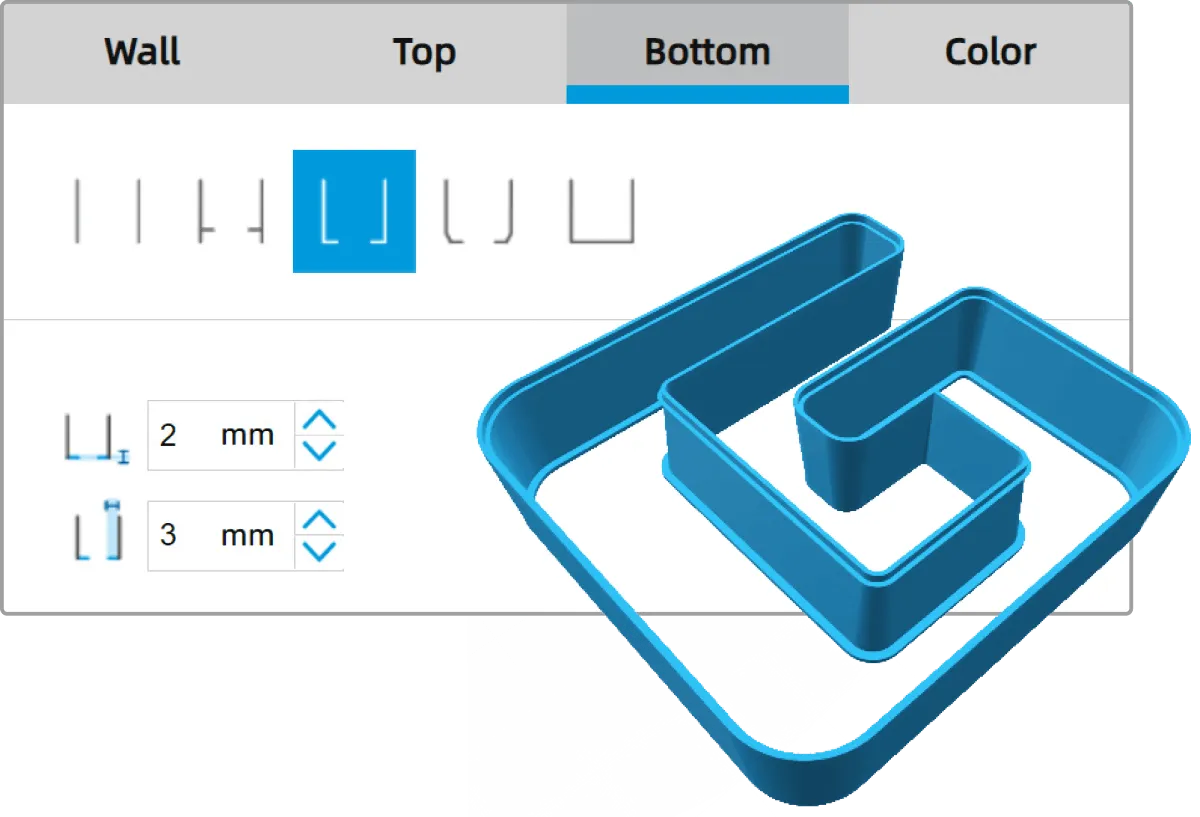
5. Configure Dual-Color Regions (if needed)
If you want to print in two colors or materials, specify the settings here. SoliFuse printers can print dual-color in one letter or one print job by switching filaments at a certain layer . In FormLetter, you can simply choose the height at which the second color begins (e.g. print the lower 50% of the return with filament A, and the upper 50% with filament B).
This is particularly useful for controlling light transmission: for example, you might print the lower part of the return in opaque filament and the top in translucent filament, so that only the top half of the letter glows when lit . FormLetter will preview the dual-color effect and ensure the transition is smooth.
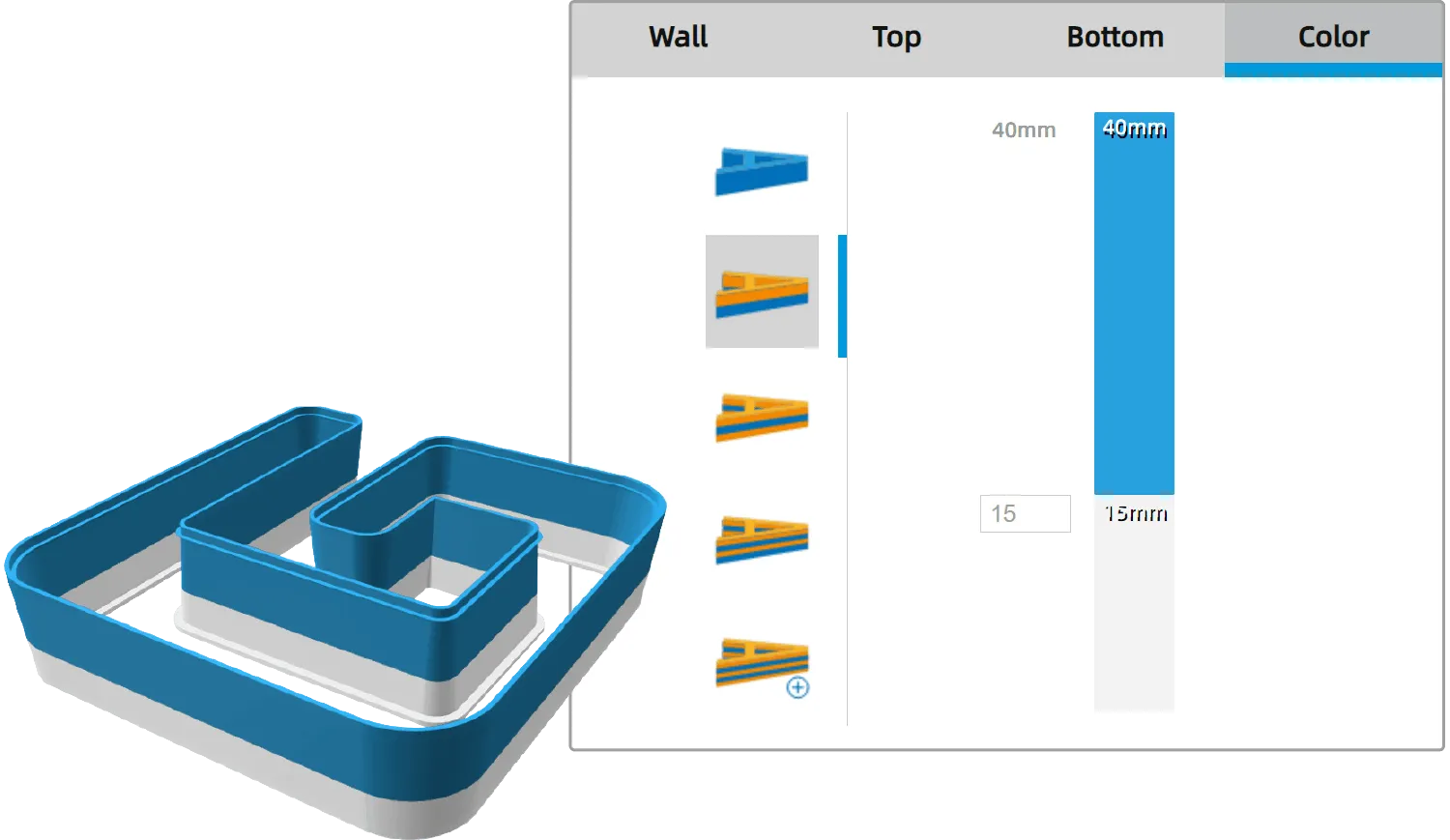
6. Export Panel Cutting Paths
Channel letters typically have acrylic or PVC faces/backings that need to be cut to shape. FormLetter conveniently generates 2D cutting files (DXF format) for these panels . With one click, you can export the outline of the letter (either the front face outline or back outline, inner and outer as needed) as vector paths . The software even lets you apply a clearance offset to the path – for instance, you might scale the back panel slightly smaller to fit inside the printed return, or the face slightly larger to overlap. You can choose positive or negative offsets to get a perfect fit . These DXF files can then be sent to a laser cutter or CNC router to cut the acrylic/PVC panels that will cap the letters.
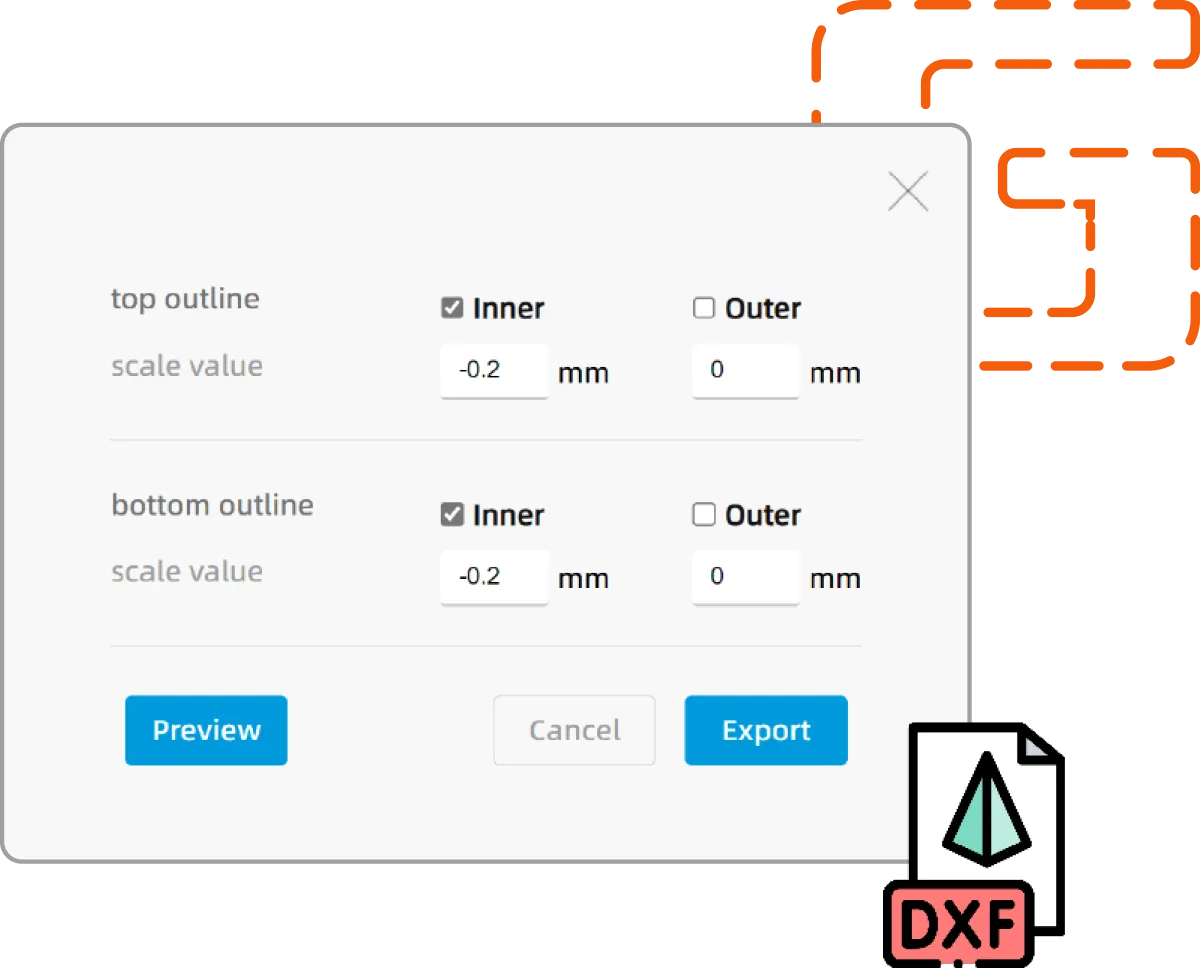
7. Slice the 3D Letter Models
Once the letter design is finalized, FormLetter has an integrated 3D slicing engine. You click “Process in Slicer” and the software will take your letters (and any ribs or features) and generate the 3D toolpath automatically . The slicer applies the appropriate settings for the SoliFuse printer model you’ve selected, and you can choose presets based on filament type or quality/speed needs. This built-in slicer is tuned for channel letter geometry, so it will optimize infill, wall thickness, and support structures as required.
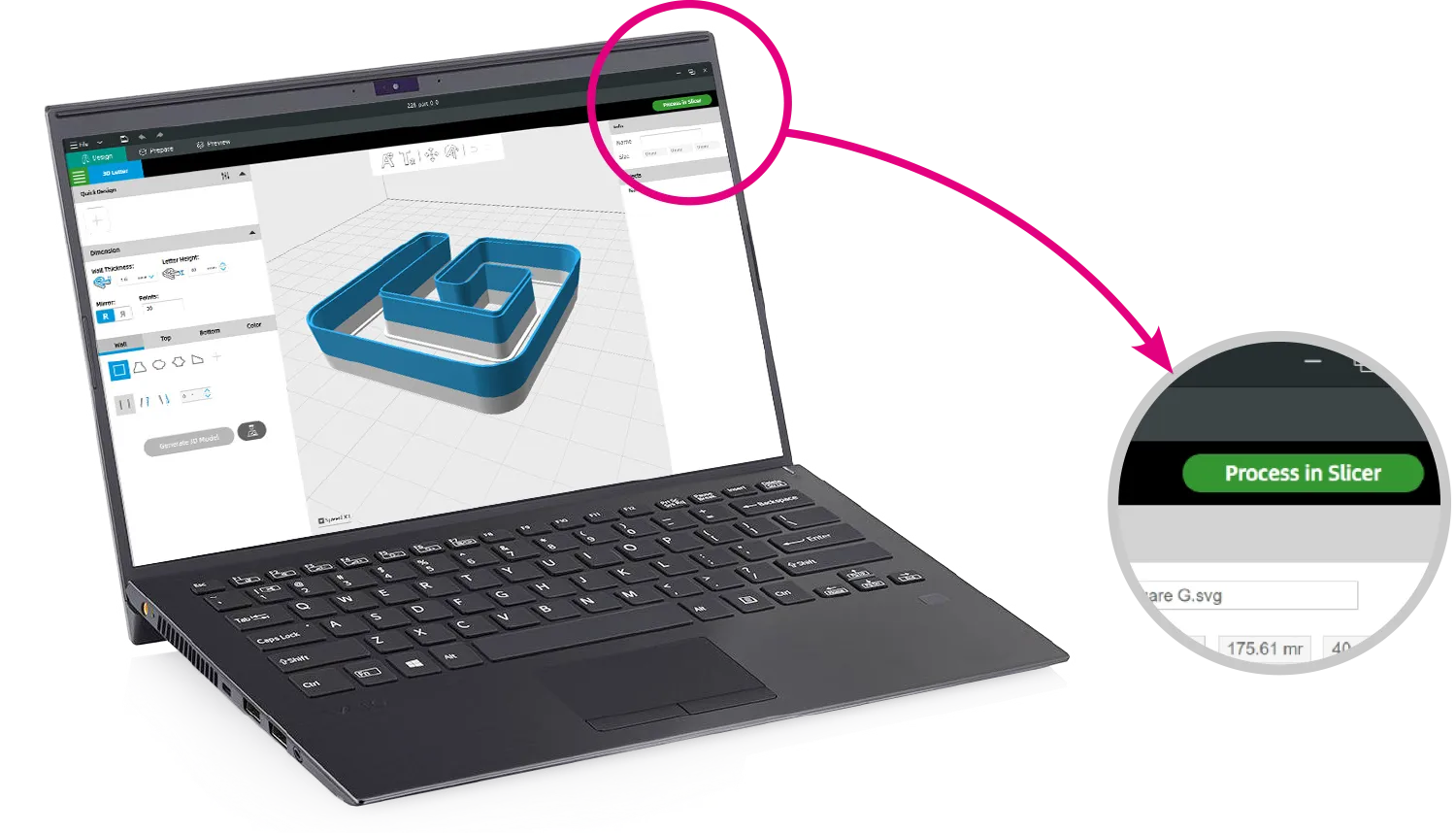
8. Output G-Code and Print
Finally, you export the G-code file for the printer and you’re ready to print . The G-code contains all the instructions for the SoliFuse machine to create your channel letters exactly as designed – including any filament changes for dual-color, and the specific toolpaths for the walls, ribs, etc. Transfer the G-code via USB flash drive or network to the printer, and the SoliFuse Speed printer will begin printing your letters. In just a short time, you’ll have durable 3D printed channel letter returns ready for assembly.
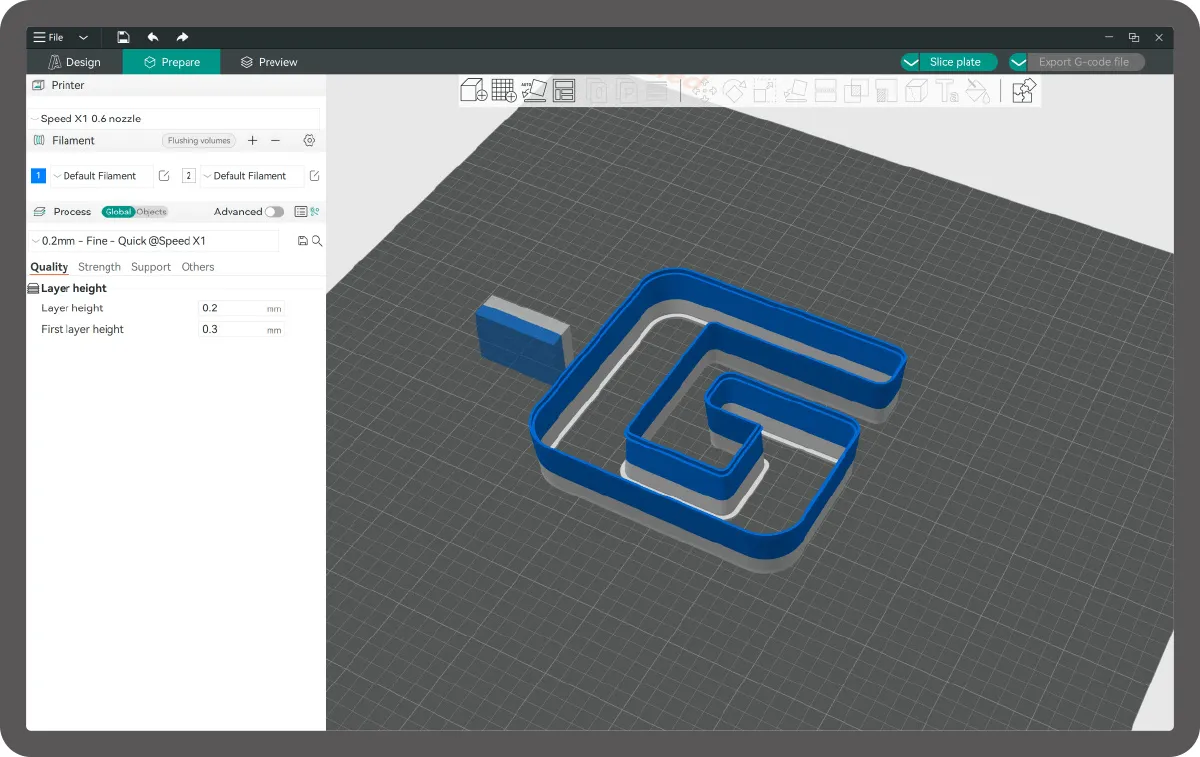
Through these steps, FormLetter streamlines what used to be a complex design and fabrication process into a single software workflow. By automatically generating the 3D models and toolpaths from 2D designs, it eliminates the need for CAD modeling skills or manual programming . This means sign shops can adopt 3D printing with a minimal learning curve – your existing vector design files and logo artwork are all you need to get started. The software’s specialized features (like ribs, edge styles, and autolayout of multiple letters) are all aimed at sign-making efficiency, saving you time in both design and production preparation .
Moreover, SoliFuse continuously updates FormLetter with new capabilities. For example, recent updates added an automatic layout/arrangement feature that can intelligently arrange multiple letters on the build platform to maximize printing efficiency (great for printing a whole sign’s letters in one go) . They also introduced new edge styles and slot options that reduce print material and time (such as an oblique nether slot that prints without supports) . These ongoing improvements show the commitment to making FormLetter a robust, one-stop solution for channel letter fabrication.
PEA Filament
PEA is a kind of PLA based alloy which is dedicated to indoor signage 3D printing. A lot of colors and textures available.
Indoor Only
PES Series
PES is a PETG based plastic alloy dedicated to 3D printing channel letters in all
weather environment.
Translucent Series
Glossy Series

Matte Series

Textured Series

Lighttight Series
Glossy Series

Matte Series

Textured Series


PES Filament
PEA is a kind of PETG based alloy for all weather signage 3D printing.
75° C/167 ℉ heat deformation temperature,
over five years of outdoor life span.
Indoor Only & Outdoor
PEA Series
PEA is a PLA-based 3D printing material specifically designed for channel letter 3D printing. It’s easy to work with and ideal for fabricating indoor signage.
Translucent Series
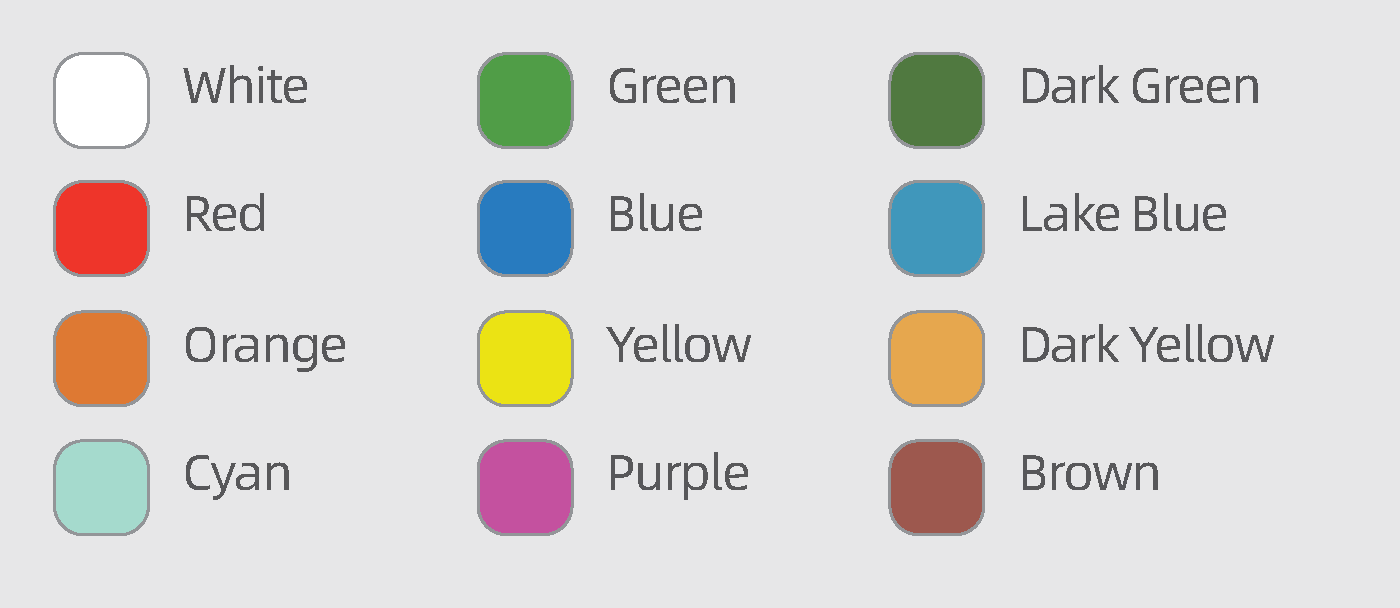
Lighttight Series

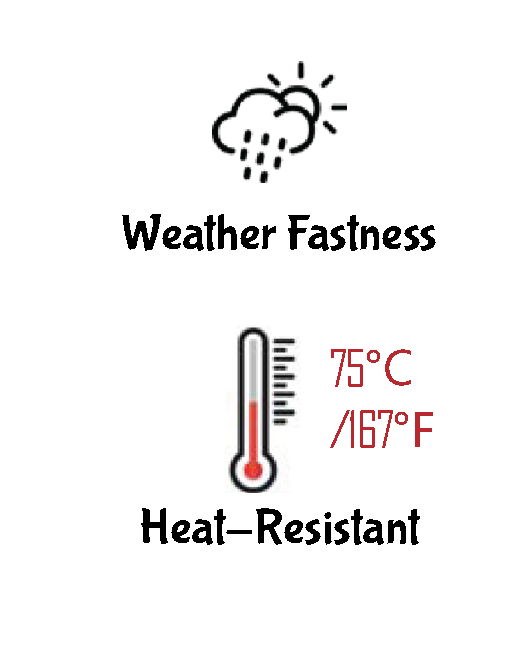
Why 3D-Printed Signage Is Gaining Momentum
3D printing technology has introduced an innovative alternative for producing channel letter signage. Instead of metal fabrication, a large-format 3D printer can directly print the letter’s “return” (side wall) using durable plastic filament. This method is rapidly growing in popularity because it addresses many pain points of traditional fabrication

Design Freedom
3D printing removes design constraints. Sign makers can create nearly any shape or style of letter by loading a digital design. Unlike metal, which restricts you to simple bends, 3D printed letters can incorporate textured, convex, or concave surfaces, intricate patterns, even internal cutouts or lattice structures. This unleashes creativity – for example, designers have printed channel letters with twisted or sculpted returns that would be impossible to fabricate by hand. When illuminated with LEDs, the combination of opaque and translucent printed materials can produce an eye-catching internal glow that metal letters can’t replicate. In short, 3D printing enables unlimited letter styles and artistic effects beyond the right angles and uniform curves of conventional methods.

Faster Production
3D printing can dramatically speed up the fabrication process. A 3D printer builds letters in a single automated process – no need for multiple steps of cutting, bending, and welding. For instance, high-speed 3D printers can create a typical channel letter in a matter of minutes, whereas traditional metal channel letters might take days of work. Overall project timelines that used to take a week or more can be completed in as little as a day with 3D printing. Faster turnaround means sign shops can take on more jobs and meet tight deadlines for grand openings, events, or rebranding projects.

Lower Costs & Labor Savings
Printing channel letters can significantly reduce labor and material costs. The process is largely automated – a single operator can print letters without the skilled manual labor of bending metal strips and welding seams. This labor-saving workflow eliminates many hands-on steps. Material waste is also minimized: a 3D printer uses only the filament needed for the letter, with almost no scrap. In contrast, metal fabrication produces offcuts and typically requires additional supplies like welding rods, fasteners, and paints. With 3D printing, all you need is the plastic filament, and no other ingredients or costly consumables. Printing plastic letters is also safer and quieter than metalworking, and does not require heavy machinery for cutting or bending.

Reduced Equipment Investment
Adopting 3D printing for channel letters can save tens of thousands of dollars in equipment costs. Traditional fabrication often requires specialized machines – channel letter bending machines, brakes, shears, welding equipment, and more. These are expensive to buy and maintain. By comparison, a single 3D printer can replace the bending, welding, and much of the finishing process. Businesses can avoid the major capital investment in multiple machines (and the floor space to house them) by using a 3D printer that does it all in one. This lower barrier to entry opens the field to smaller sign shops and enables larger shops to expand capacity more affordably.

On-Demand Production & Inventory
3D printing supports a just-in-time production model for signage. Sign makers no longer need to keep an inventory of pre-fabricated channel letter parts or various aluminum coil colors/sizes. Any letter can be printed on demand from digital files, giving freedom of letter style without being limited by stocked materials. This greatly reduces material inventory – you stock only spools of filament, rather than piles of metal strips and acrylic faces. Being able to print letters as needed also means quick customization for each job and less storage of unused parts.
What Are 3D Channel Letters and Why Are They Popular?
3D channel letters are custom three-dimensional letters (often internally illuminated with LEDs) used in signage for storefronts, buildings, and events. Each letter typically has depth (“returns”) and can be front-lit, back-lit, or both, creating a striking visual effect. In today’s visually-driven market, businesses seek signage that stands out and grabs customer attention. Three-dimensional signs create a distinctive, high-impact look that reinforces brand presence in ways flat signs cannot. With modern LED lighting, channel letters have become even more popular because they are energy-efficient and highly visible day or
Traditional channel letters are made by fabricating metal (usually aluminum) into letter shapes: metal coils are bent and welded to form the letter sides, with acrylic faces and backs added. This conventional process is labor-intensive and limiting. Sign makers must bend and snip metal with painstaking accuracy, and are often limited to simple curves or angles. Complex shapes, intricate fonts, or textured surfaces are very difficult to achieve with manual metal bending. As a result, businesses have been eager for new methods that allow more creative freedom, faster turnaround, and lower costs in making channel letter signs.
What Can You Create with a SoliFuse 3D Printer?
3D printing technology has introduced an innovative alternative for producing channel letter signage. Instead of metal fabrication, a large-format 3D printer can directly print the letter’s “return” (side wall) using durable plastic filament. This method is rapidly growing in popularity because it addresses many pain points of traditional fabrication:
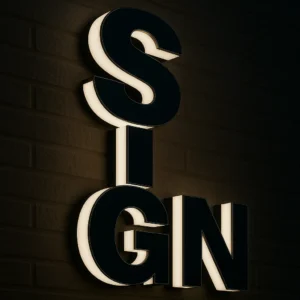
Illuminated Outdoor Channel Letters
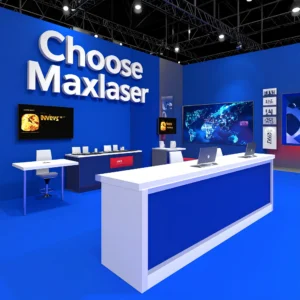
Event & Exhibition Signage

Indoor Signage & Logos
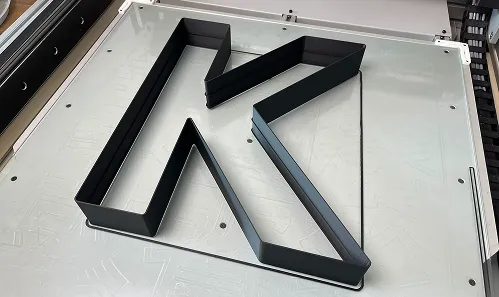
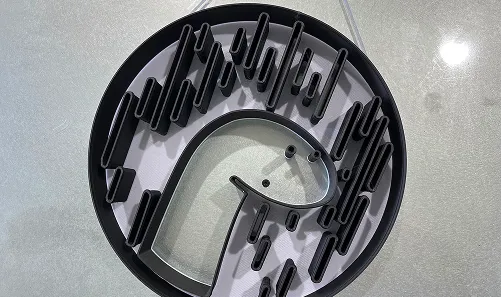
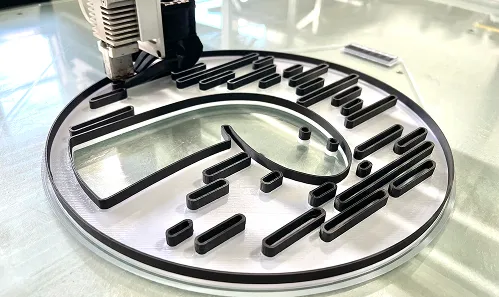
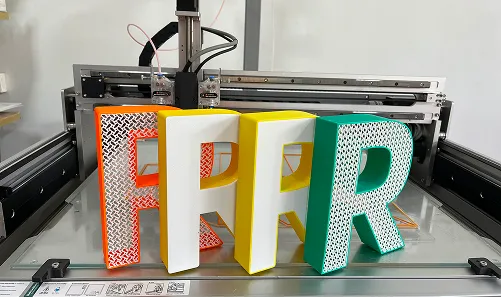
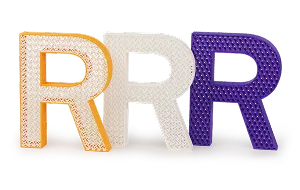
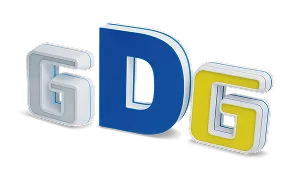
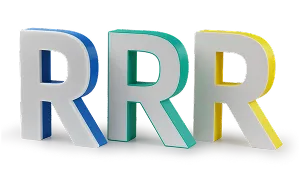
MaxLaser
Your Partner for 3D Signage Solutions
MaxLaser is proud to partner with SoliFuse to bring this state-of-the-art channel letter 3D printing technology to our region. As a leading provider of signage and fabrication equipment in South Africa, MaxLaser understands the needs of local sign makers and fabricators. We offer the SoliFuse Speed Series printers, FormLetter software, and specialized filament materials along with full training and support, so you can seamlessly integrate 3D printed signage into your business.
When you work with MaxLaser, you get more than just a machine – you get a complete solution backed by our expertise. Our team will guide you in choosing the right SoliFuse printer model for your volume and size requirements, ensure your staff is trained in using FormLetter and the printer, and provide local after-sales service for maintenance or questions. We also supply genuine SoliFuse filaments and parts, so you have a reliable source of materials designed for optimal signage results (including those light-tight and translucent filaments that make face-lit and back-lit letters possible). With local inventory of consumables, you won’t be stuck waiting weeks for materials.
MaxLaser has a track record of helping businesses adopt new fabrication technologies – from laser cutters to UV printers – and we see 3D printed signs as the next big leap in signage production. By choosing us as your partner, you benefit from:
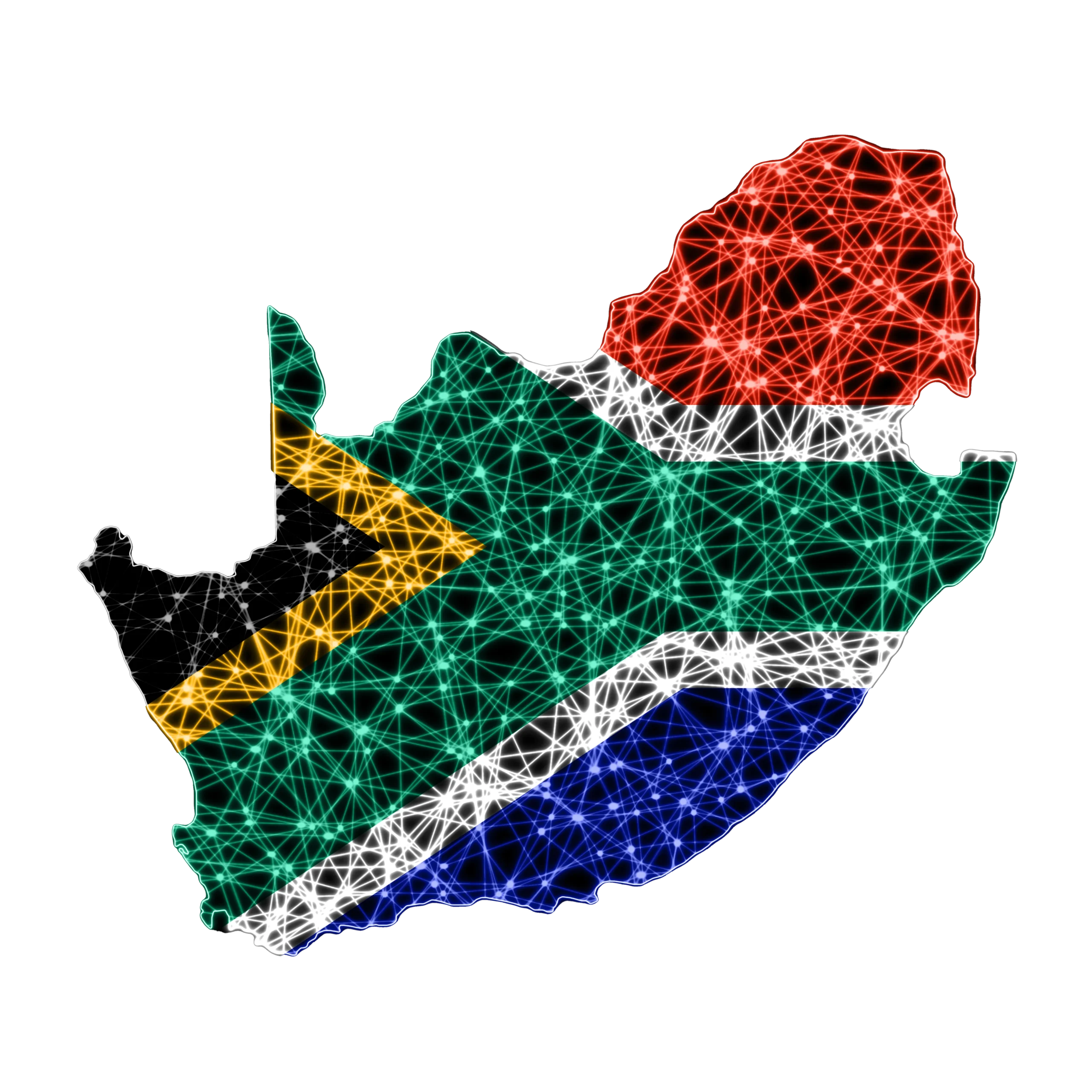
Regional Expertise
We understand the South African and African market’s signage trends, environmental conditions, and business needs. We can advise on the best practices (for example, material choices like ASA for outdoor signs in our climate) and even connect you with success stories and users who have transformed their workflow with SoliFuse printers.

Technical Support & Training
Our certified technicians are trained on SoliFuse equipment. We offer installation, setup, and training to get you up to speed quickly. Ongoing support is just a phone call away – whether it’s troubleshooting a print or learning how to optimize a design in FormLetter, we’re here to ensure you succeed. We can also assist in integrating the 3D printer workflow with your existing CNC laser cutting for a smooth process from print to panel fitting.
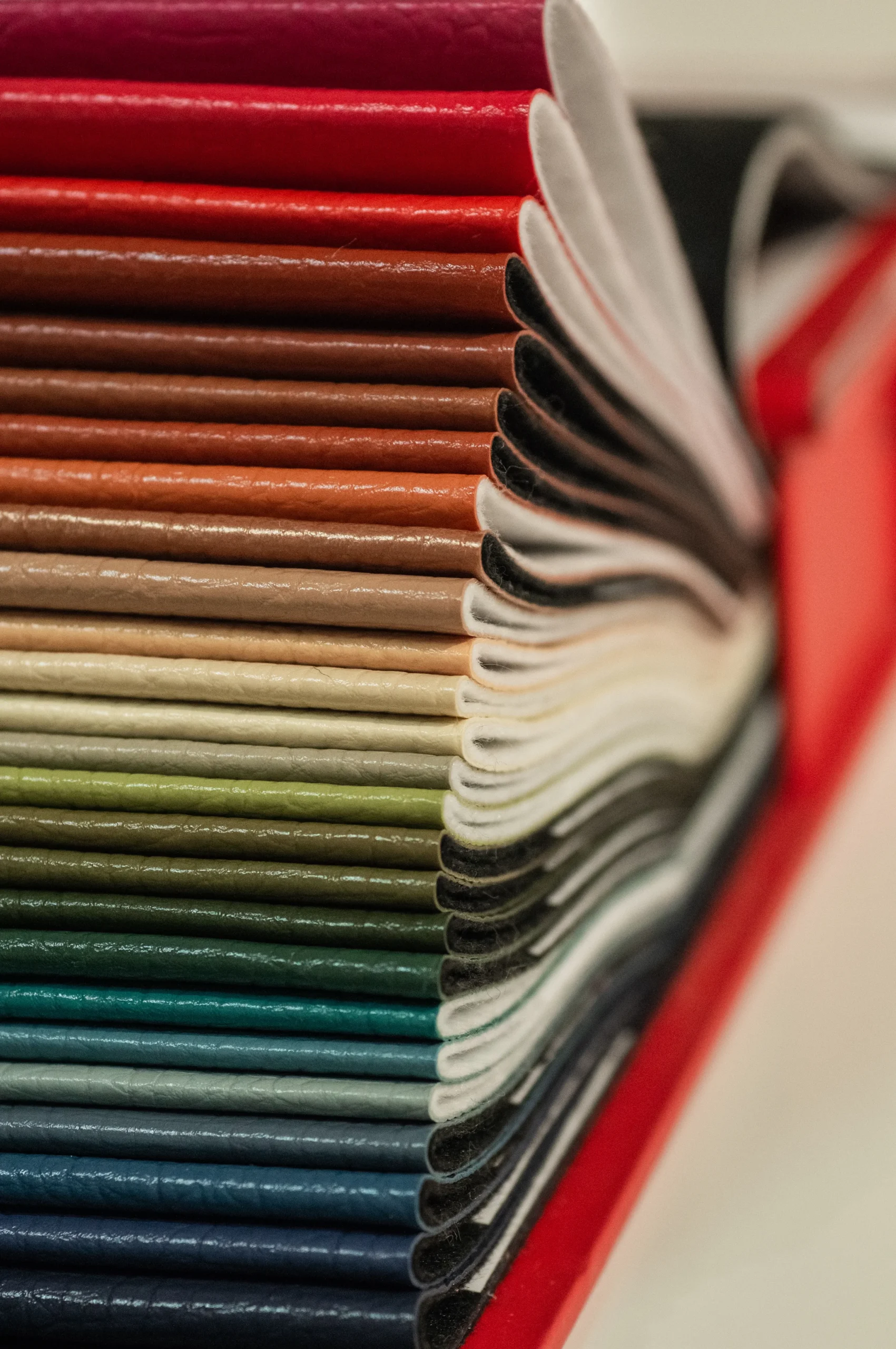
Materials and Maintenance
MaxLaser stocks the recommended filaments for channel letter printing (including SoliFuse’s PEA filament series which prints large letters with minimal warping). We can advise on the right filament for each job (e.g. PETG vs. ASA for different sign types) and keep you supplied so you never have downtime. Additionally, we carry spare parts and offer preventative maintenance services for the printers to maximize your uptime.
By leveraging SoliFuse’s cutting-edge 3D printing technology with MaxLaser’s local support, sign manufacturers can gain a competitive edge. You’ll be able to offer your clients faster turnaround, unique designs, and cost-effective signage solutions that set you apart. Whether you’re a signage shop looking to modernize production, or a business seeking an eye-catching 3D sign, MaxLaser is here to help you join the new wave of digital signage fabrication.
Frequently Asked Questions
The SoliFuse Speed Series is one of the fastest, most signage-optimized 3D printers available in South Africa. It’s engineered for LED channel letter production with dual-color support, industrial mechanics, and full automation.
Yes, the SoliFuse printers are designed to work with acrylic faces. The FormLetter software even exports cutting paths for acrylic and PVC panels to match your printed letters precisely.
Absolutely. Even the Speed X1 model is built for high throughput and quality in compact spaces — ideal for small shops looking to scale fast without huge equipment costs.
It’s simple: get the SoliFuse printer, use FormLetter to design and slice letters, and start offering signage services locally. MaxLaser offers training, materials, and startup guidance to get you going fast.
Ready to explore what SoliFuse 3D printer for signage can do for your business?
Contact MaxLaser for a consultation or demonstration. Let us help you elevate your signage with 3D printed channel letters – the future of sign fabrication is here, and with SoliFuse and MaxLaser, you can be at the forefront of this exciting transformation.
